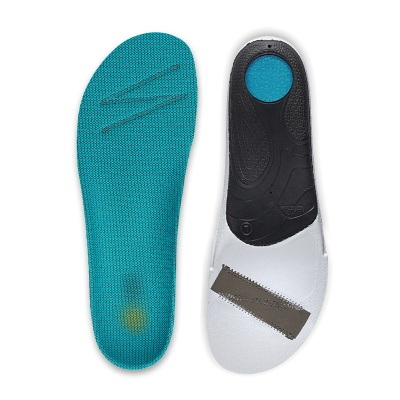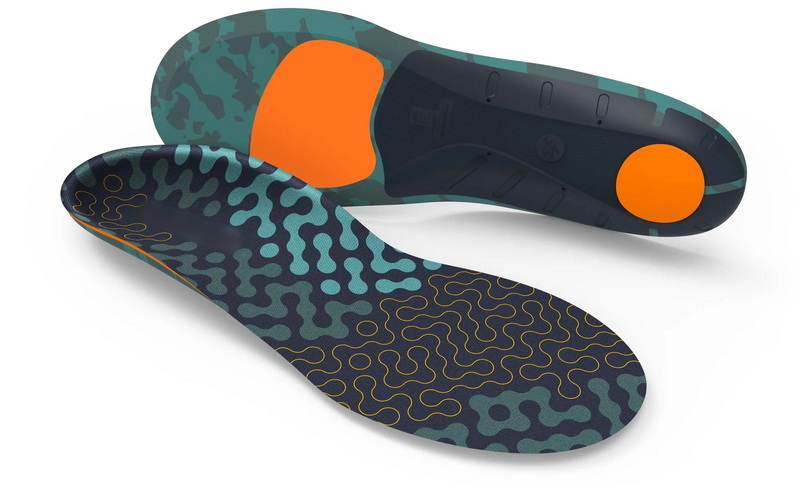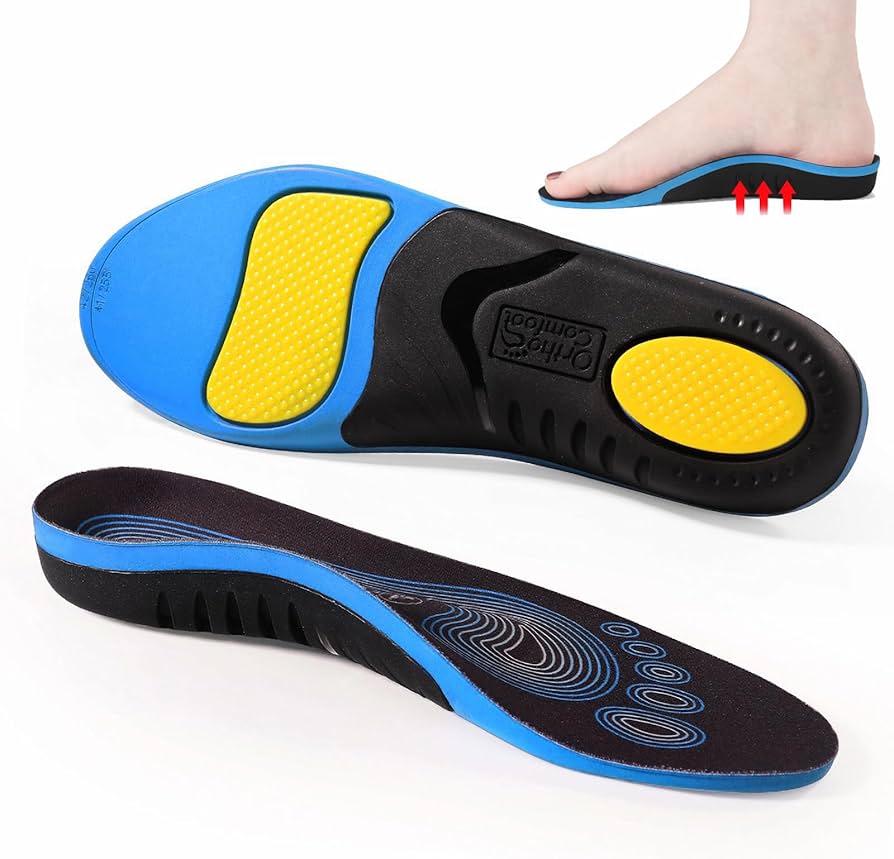Views: 222 Author: Edvo Publish Time: 2025-10-22 Origin: Site











Content Menu
● Understanding Corns on the Sole
● How Insoles Help with Corn Relief
● Best Types of Insoles for Corn-Prone Feet
>> 2. Arch Support Orthotic Insoles
>> 5. Custom-Made Orthotic Insoles
● Ideal Materials for Comfort and Durability
● Complementary Treatment Methods
>> Moisturizing and Protection
● Self-Care Tips for Ongoing Relief
● The Role of Insoles in Long-Term Foot Health
● Our OEM Insole Manufacturing
● Maintaining Your Insoles for Longer Use
● FAQs
>> 1. How do insoles help with corns?
>> 2. Are gel or foam insoles better for corns?
>> 3. How often should insoles be replaced?
>> 4. Can custom orthotics completely prevent corns?
>> 5. Can insoles work without new shoes?
Finding the right insoles for corns on the soles of your feet can transform your comfort, mobility, and general foot health. Corns develop due to repeated friction or pressure, forming hardened skin that can make every step painful. Specialized insoles are essential for providing cushioning, realignment, and protection against further irritation. This expanded guide will explore the best types of sole insoles, materials, treatment recommendations, and self-care techniques for long-lasting relief.

Corns form when the skin thickens in response to friction or pressure. They often appear on high-impact zones such as the heel and ball of the foot. While they might seem similar to calluses, corns have a distinct hard center that presses deeper into the foot tissues, sometimes causing significant pain during walking or standing.
On the sole, these corns—often called seed corns—are common among individuals who walk barefoot, wear tight shoes, or have structural misalignments such as flat feet. The pain intensifies when pressure is directly applied to the affected area. Using proper insoles helps distribute body weight evenly, softening the load on sensitive areas and reducing repeated friction.
Insoles relieve pain by evenly redistributing pressure across the foot surface and maintaining proper alignment between the arch, heel, and toes. They also act as shock absorbers, reducing the impact during walking or running. Insoles can correct gait or alignment issues that cause uneven pressure, a primary reason corns return even after removal.
An insole suitable for corns should offer:
- Targeted cushioning beneath the metatarsal area
- Firm but flexible arch reinforcement
- Breathable, bacteria-resistant fabric
- Shock-absorbing heel cups for comfort on hard surfaces
- Smooth lining to reduce heat and friction
When used consistently, insoles also help prevent new corns by supporting a healthier walking posture and reducing excessive rubbing from shoes.
These insoles feature targeted cushioning zones designed to offload pressure from sensitive or inflamed areas. They usually include gel-filled pads or multiple foam densities that create balance during movement. Individuals who stand for prolonged periods, such as warehouse workers or nurses, often benefit most from pressure relief insoles.
Orthotic insoles align the foot's natural curve, correcting overpronation or flat-footed walking that can aggravate existing corns. They stabilize the heel and prevent sliding inside shoes, which leads to unnecessary friction. These are the most effective choices for people with chronic callus or corn formation caused by poor biomechanics.
Gel-based insoles are soft, flexible, and cooling to the skin. The gel absorbs shocks from walking or exercise, easing discomfort without adding bulk. They are ideal for casual and everyday footwear, offering instant relief for those with sensitive or diabetic feet.
These insoles include raised cushioning beneath the ball of the foot, relieving localized pressure near the metatarsal heads where corns frequently appear. They also reduce pressure on the plantar surface, helping individuals who spend hours walking on hard surfaces.
Custom orthotics are highly recommended for persistent or severe corns. They are molded to your foot's exact shape using pressure point analysis and gait scanning. These insoles correct irregular movement patterns, preventing future corns and reducing stress on affected zones effectively.
Different materials cater to varying comfort needs, budgets, and levels of activity. Understanding each helps in choosing the perfect insole for your condition.
- EVA Foam: Lightweight, flexible, and durable with excellent shock absorption for daily wear.
- Gel: Best for soft, sensitive feet needing relief from pressure.
- Memory Foam: Molds to foot shape for personalized support but compresses faster over time.
- Leather: Highly durable, offers a natural feel, and suits formal footwear.
- Graphite or Carbon Fiber: Ideal for athletes seeking stability without extra weight.
Choosing materials that match your foot condition and activity level ensures consistent protection from both pressure and friction-related pain.

Not all insoles fit every foot. Before purchasing, assess these factors:
- Identify whether your arch is low, neutral, or high.
- Replace existing shoe liners with the new insole to ensure a proper fit.
- Avoid bulky insoles that make shoes tight, as they increase friction.
- Choose designs suitable for the intended use—running, walking, or workwear.
- Regularly replace insoles every six to nine months or at the first sign of flattening.
Performing these steps keeps your insole effective for long-term corn relief.
Besides using insoles, adopting a regular foot-care routine enhances recovery and prevents recurrence.
Soaking feet in warm water softens the corn, allowing gentle removal of dead tissue using a pumice stone or foot file. Adding Epsom salts helps reduce swelling and callus buildup.
Daily application of moisturizing creams reduces friction caused by dryness. Natural ingredients such as urea, aloe vera, and tea tree oil improve skin flexibility while maintaining softness. For added protection, moleskin pads or felt disks can cushion the corn area.
Avoid narrow shoes, high heels, or rigid materials that compress toes and increase pressure. Choose shoes with soft uppers, wide toe boxes, and cushioned soles that promote even weight distribution.
If painful corns persist, podiatrists may trim excess skin, recommend medical-grade insoles, or prescribe salicylic acid patches. In rare situations, corrective surgery might be necessary to realign bones or relieve chronic pressure on the affected area.
1. Maintain proper foot hygiene by washing and drying thoroughly every day.
2. Alternate different pairs of shoes to reduce repetitive stress.
3. Keep toenails trimmed to prevent pressure and imbalance.
4. Check for signs of infection such as redness, swelling, or discharge.
5. Use foot powder or breathable socks to minimize moisture and friction.
Adhering to these preventive habits keeps your feet healthy and lowers the risk of future corns.
Corns often indicate deeper biomechanical problems. Quality insoles not only alleviate surface pain but also support alignment, reducing joint and muscle strain throughout the body. They promote efficient energy transfer while walking and can correct posture-related discomfort in ankles, knees, and hips. Over time, users typically notice a decline in callus recurrence and an improvement in gait stability.
For diabetic or elderly individuals, using cushioned, orthotic-grade insoles is crucial to prevent ulcers or open wounds resulting from corns. Properly fitted insoles act as a barrier, reducing shear forces that commonly lead to skin breakdown.
As a leading insole manufacturer in China, our company provides OEM and ODM services for international brands, wholesalers, and footwear manufacturers. Our EVA and PU foam insoles integrate anti-slip technology, ergonomic shaping, and high elasticity to provide both premium comfort and brand-level customization. We serve industries ranging from sports footwear to medical orthopedic solutions, delivering globally recognized quality.
Whether you need mass-produced arch-support insoles or specialized medical-grade orthotics designed for corn and callus relief, our production lines can offer precision, consistency, and compliance with international standards. Choosing our OEM service ensures your brand delivers not only comfort but also long-term foot care benefits to customers worldwide.
To retain comfort and hygiene, regular care is essential:
- Remove insoles after use to allow drying.
- Clean gently with a damp cloth and mild soap.
- Avoid prolonged exposure to high heat or sunlight.
- Replace when edges curl or when cushioning feels uneven.
These steps extend insole lifespan and preserve their orthotic performance.
The right insole transforms discomfort from corns into all-day walking relief. By supporting natural foot alignment, distributing pressure, and softening friction-heavy zones, insoles address both the symptom and root cause of corns. From EVA and gel to custom orthotic designs, choosing quality insoles prevents recurrence while enhancing mobility. For footwear brands and wholesalers, partnering with dedicated OEM suppliers ensures your customers experience medical-grade comfort with every step. Healthy feet begin with proper support—and the right insole is the foundation.

They cushion the foot and evenly spread pressure, reducing irritation and pain from existing corns while preventing new ones from forming.
Gel insoles are softer and provide better impact relief, while EVA foam insoles balance support and cushioning for active use.
Most insoles need replacing every six to nine months depending on wear frequency, activity type, and visible signs of flattening.
Yes, by correcting foot alignment and distributing weight properly, custom orthotics drastically reduce the recurrence of corns.
Yes, but pairing insoles with comfortable, well-fitting shoes enhances their performance and prevents friction inside the shoe.